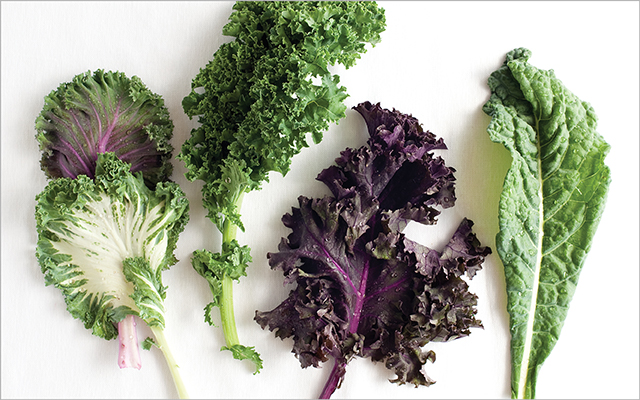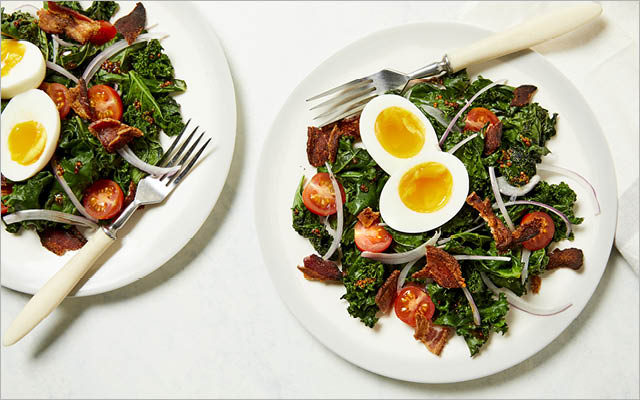Eat for the Nutrition
Kale is one of the more nutrient-dense veggies you can add to your culinary repertoire. Rich in fiber and health-boosting antioxidants, it also offers a variety of minerals, including calcium and manganese, as well as vitamins A, C, and K.
Shop and Store
Pick vibrant bunches with sturdy leaves, and avoid kale that appears limp or yellowish. When possible, choose organic and locally grown varieties. A bunch will keep in the refrigerator, wrapped loosely in a paper towel and placed in a plastic bag, for up to a week.
Go for Variety
Perhaps the most common type, curly kale features bright green leaves with wavy edges and a peppery flavor. Tuscan kale (also called lacinato or dinosaur kale) offers darker, thinner, earthier-tasting leaves. Red kale (sometimes called red Russian kale) boasts red or purple stems and tastes a bit sweeter than other varieties.
Stem and Slice
To prep kale, strip the leaves from the stems, stack the leaves, roll them into a bundle, and use a sharp knife to slice them into the desired size. Chopped kale can be braised or sautéed with aromatics for a satisfying side dish or stirred into soups, stews, or stir-fries for a nutritional boost. (For kale recipes, head to “Recipes: Kale, Four Ways”.)
Massage
You can also eat kale raw in a salad, but you’ll want to tenderize its tough leaves for optimal flavor and digestion. To massage, place one chopped bunch in a bowl and drizzle with 2 tablespoons extra-virgin olive oil. Rub the oil into the leaves for two to three minutes; the kale will wilt slightly and darken in color.
This originally appeared as “Kale” in the December 2020 print issue of Experience Life.




This Post Has 0 Comments